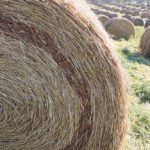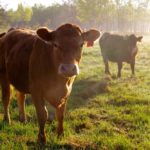Reading Time: 4 minutes Letting cattle ‘pick and choose’ what they want to eat is no substitute for feed testing. The quality of forage needs to be matched to the animal’s needs — and those nutrition requirements are going to change throughout the year. And that’s why you should test your forages, say experts and groups such as the […] Read more

Put your forage to the test – and money in your bank account
High-quality forage will save the cost of supplementing, and avoid costly calf losses
The test results are back —so what do they mean?
Test results should drive a feeding program, but you need to know what the numbers signify
Reading Time: 2 minutes Interpreting forage test results can sometimes be like trying to read a foreign language. But there’s a new translation tool — the aptly named ‘A Tool for Evaluating Feed Test Results.’ “The tool is designed to take feed test results and compare them to basic nutrition rules of thumb for different classes of cattle,” said […] Read more

Beef sector redoubles its efforts to reach out to consumers
The goal is to use solid data and offer to the public in easy-to-digest ‘packages’
Reading Time: 3 minutes A new Beef Cattle Research Council article making the case that beef production uses water efficiently is the latest example of a renewed effort to reach out to consumers. The industry has recognized there is “a gap on the consumer communication side and somebody needed to do something,” said Reynold Bergen, the council’s science director. […] Read more

Here’s what the beef industry says about its water use
The amount of water needed to produce a pound of beef looks high — until you hear the whole story
Reading Time: 5 minutes Editor’s note: This article from the Beef Cattle Research Council makes the case that beef production has a much lighter ‘water footprint’ than critics charge and provides a number of environmental benefits. It has been condensed and lightly edited. The full article is at www.beefresearch.ca. Yes, it takes water to produce beef, but in the […] Read more

Program looks to connect researchers to the beef industry
Reading Time: < 1 minute Applications for the 2019-20 term of the BCRC Beef Researcher Mentorship Program are being accepted until May 1. Four researchers were selected to participate in the program this past year, with each paired with two mentors — an innovative producer and another industry expert. The program, launched in 2014, connects new applied researchers with the […] Read more

A simple system to fit the scourge of scours
Losses, treatment costs, and reduced performance can be a $4,000 hit in a 100-head beef herd
Reading Time: 5 minutes Editor’s note: This article from the Beef Cattle Research Council posted last fall offers what could be money-saving advice for producers heading into spring calving. The following is a condensed version. The full article ‘How fresh pens and pastures prevent calf losses’ can be found at www.beefresearch.ca. Doug Wray believes in keeping newborn calves separated […] Read more

Making the grade — new yield standards will drive change
New yield grades based on what retailers want will affect both genetics and management
Reading Time: 4 minutes Canada’s new beef yield grade standards will make it easier for beef producers to know which of their cattle are hitting top marks — and which ones literally aren’t making the grade. “In the old system, we basically had a high, medium, and low classification, and for many years, we had more than half of […] Read more

Timely tips for calving season
Reading Time: < 1 minute A new Beef Cattle Research Council blog has a number of tips for having more healthy calves. The tips from Dr. Claire Windeyer of the University of Calgary faculty of veterinary medicine program include how to resuscitate calves, putting them into a recovery position, assessing a suckle reflex, and identifying health issues such as scours […] Read more

What’s in the beef research pipeline?
Reading Time: < 1 minute An increase in the national beef checkoff (from $1 to $2.50 per head in most provinces) has increased the Beef Cattle Research Council’s research budget to about 75 cents per head (versus 15 cents previously). Under the new Beef Science Cluster III program — which runs until March 31, 2023 — $21 million will go […] Read more

Trio of cattle webinars coming up
Reading Time: < 1 minute A trio of Beef Cattle Research Council webinars are coming up. On Jan. 15 (at 5 p.m. Alberta time) four veterinarians (including Roy Lewis and Craig Dorin from Alberta) will discuss some of the most common issues they see in their region, including pink eye, foot rot, and reproductive issues. A grazing management webinar on […] Read more

